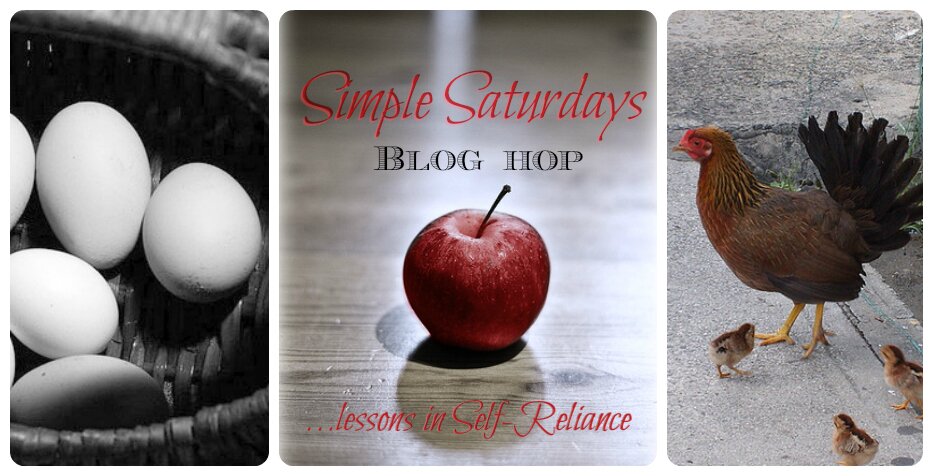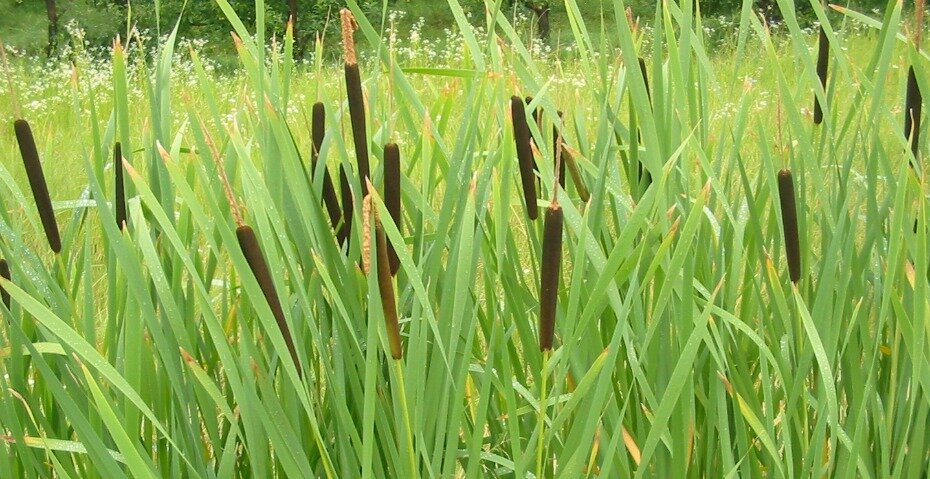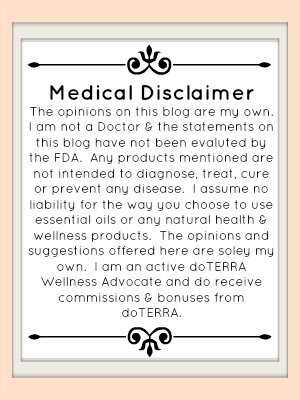“Teas and tinctures, salves and balms Studying the plants from dusk till dawn” ~ Natalie Vickery
Welcome back…
Today we will be looking more in-depth at several herbs & Essential Oils; Citronella, Eucalyptus, Pennyroyal, Cedar and Rose Geranium…AND making 1 recipe; Insect Repellants!
Let’s get to it…
Citronella Essential Oil
Citronella
Citronella oil can be identified with its color less, or faint yellow color and fresh lemon-citrus fragrance. It is obtained from tall perennial citronella grass which is grown in Sri Lanka, Java, Vietnam and Zimbabwe. This grass basically belongs to the lemon grass family. Citronella essential oil is extracted from fresh or dried citronella grass with the help of steam distillation process. Some natural components of citronella oil are citronellal, citronellol, geraniol, geranyl acetate, limonene etc. Two different varieties are available. One is the Ceylon and the other one is Java. When it comes to citronella oil uses, the Java variety is more widely used. This is because the essential components geraniol and citronellal are present in higher amount in this variety.
How to Use Citronella Oil as Insect Repellants
Citronella oil acts as an excellent repellent for insects like mosquito, fleas, ticks, moths, etc. For this reason, it is preferred as a safe and non-toxic insecticide over toxic chemical based insect repellents. Citronella oil can be used in many different ways for this purpose. Other naturally occurring substances like peppermint oil and cinnamon are also added in these products to enhance the insect repellent property of citronella. To keep insects away from your house or garden area, you can use citronella candles and lamps. When you burn them, the fumes will spread over a large area and control insects. To keep insects at bay in a barbecue, or pool side picnic, use citronella oil pellets. Place these pellets around the plants in the recreational area and you will not be disturbed by insects. For flea control in pets of the house, flea collar with citronella oil is highly effective.
Other Uses of Citronella Oil
Citronella oil uses are not just confined to repelling insects. It has various medicinal values. It has a major role in perfume industry too. Here are a few other uses:
As Aromatherapy Oil Citronella oil possesses anti-inflammatory properties. When this essential oil is diluted with a base oil and massaged on the skin, it releases a warm sensation that provides a soothing relief from muscle cramps and painful joints. It is also good for abdominal cramps caused due to gastrointestinal infections and menstruation. It not only helps to get rid of physical discomfort, but also has a relieving effect on your senses. Massaging with this aromatherapy oil relaxes the taut nerves, reduces anxiety and gives peace and tranquility. It can also cures stress induced migraine and headache.
As Anti-microbial Agent Citronella oil has antiseptic qualities and can be safely used on wounds. It will heal up the wound by promoting formation of scar tissue. It will also protect the area from bacterial attack. Its fungicidal attributes help in the treatment of various forms of fungal infection on skin.
As Astringent Another important use of citronella oil is as an astringent for oily skin. Many women find it difficult to put on makeup as their skin is excessively oily. They can just take a few drops of the oil on a cotton ball and rub it on the face. This will remove excess oil from their facial skin. Then, they can apply their regular makeup.
As Perfume Oil In perfume industry, Java citronella oil is in great demand. It is a vital ingredient for manufacturing various perfumes. This is because geraniol present in this oil serves as the basic building block in the perfumery work.
There are no major side effects of using citronella oil. However, it might not be safe for pregnant women. Some people have complained about skin irritation after applying citronella oil on skin. Therefore, you must test in a small portion of the skin before using it on wider areas.
Recipe:
Citronella Lotion 2 ounces distilled water 2 ounces olive oil 120 drops citronella essential oil A lotion is an emulsification of water and oil. To prepare: Put water into a deep mixing bowl. Begin to drizzle in the oil slowly and beat vigorously with a wire whisk. By the time all the oil is added you should have a nice creamy white lotion. Stir in the citronella oil. Pour into a lotion bottle and label.
Eucalyptus Essential Oil
Eucalyptus
Eucalyptus oil is derived from the leaves and stems of the eucalyptus tree, also known as Eucalyptus globulus or fever tree, which is a tall tree with leaves that are pointed, bluish-green in color, and highly aromatic. The oil is extracted by a process of steam distillation, with about 110 pounds of the leaves or stems required to make 2 pounds of oil. It is thought that the therapeutic properties of this oil was probably first known by the Aborigines of Australia, since the plant originates from there, who had used it to treat fevers and skin problems.
The Properties of Eucalyptus Oil
Eucalyptol is the chief active ingredient along with other elements like valeraldehyde, sequiterpene, terpineol, pinocarveol, pinen, camphen globulal, cineol, fenchen, and butylaldehyde. Eucalyptus oil has a warming effect on muscles and feels cool on the skin. It has strong antiseptic, antiviral and antibacterial properties. It is also helpful for relieving fevers and coughs, lowering blood sugar, and is also a diuretic.
Mainly because of its anti-inflammatory properties, eucalyptus essential oil is often used as an ingredient in preparations made for relieving joint, nerve, and muscle pains. Psychologically, it helps in combating exhaustion and dispelling mental lassitude. Its beneficial effects can be felt when it is used in room humidifiers and vaporizers.
Many therapists consider eucalyptus oil as an universal oil which can be used in its undiluted form on the skin of adults. However, others advise caution about using it directly on the skin, and instead suggest that it be diluted in a massage lotion or a carrier oil. It is one of the most popular amongst the essential oils since one of its properties is enhancing the effects of other essential oils.
For example, when combined with lavender oil, it enhances its sweetness. Adding it to pine and marjoram essential oils can increase the expectorant and decongestant effects. When eucalyptus oil is combined with orange or bergamot oil, it increases its stimulating effects.
Uses of Eucalyptus Essential Oil
• For muscle pains and aches, mix 10-15 drops of this oil with 2 oz of grape seed oil or sweet almond oil, and massage it on the affected area using circular motions.
• In order to relieve colds and coughs, use eucalyptus oil to make a chest compress as well as a massage oil. This will help in loosening the phlegm and improve respiration. • Adding a couple of drops of this medicinal oil on a piece of cloth or handkerchief and inhaling the aroma whenever required can also alleviate the symptoms of cold.
• The powerful germicidal properties of eucalyptus can help in healing insect stings or bites, ulcers, burns, and wounds. Put a few drops on a dressing and apply it on the affected area.
• In order to get rid of dandruff, add about 10 drops of this herbal oil to the shampoo you use, and massage it well into your hair and scalp, and allow it to stay there for about 3-5 minutes, and then rinse it off with warm water.
• For a stimulating and cooling effect on the body and mind, make a blend of eucalyptus oil and other essential oils and apply it on your pulse points.
Using Eucalyptus Oil for Sinusitis
There are three ways by which you can take advantage of the therapeutic properties of eucalyptus oil for treating sinusitis and related symptoms – steam inhalation, dilution and application/direct application.
Steam Inhalation This is the most popular method that relieves sinus inflammation, clears nasal congestion and soothes respiratory blockages as well. For doing this, you need to fill a small tub or a large bowl to about 3/4th of its capacity with hot water. Next, add some eucalyptus oil, either a few drops or a teaspoonful (depending upon how strong you want the steam to be), to the water. Now, look into the tub of fragrant water and hang a towel from your head such that it covers the front and sides of your face as well as the water containing vessel. This compartment of sorts makes sure that the steam does not escape so that you can inhale as much as you want with your nostrils. Keep your mouth closed and breathe in deep so that the eucalyptus essence-laden steam reaches deep inside the nose and the upper respiratory tract. This method is very effective in providing relief from inflammation of the sinuses and blood vessels inside the nasal cavity, soothing nasal congestion and sinus headache.
Dilution and Application This method is a more direct way of using eucalyptus oil for sinus headache and facial discomfort caused by inflamed sinuses. You need to add a few drops of eucalyptus oil in some other mild, non irritating oil such as olive or coconut oil. When diluted, it can be applied directly to the aching and swollen regions without risking any kind of skin irritation or rashes. This method is suitable for treating sinusitis in people who have sensitive skin but don’t have enough time to go through the steam inhalation method.
Direct Application This is the easiest and most common method. All you need to do is apply a few drops of pure, undiluted eucalyptus oil directly on the site of discomfort such as the forehead, temples and cheek areas closest to the nose. You can also apply a very teeny-tiny amount along the edges of the nostrils so that the vapors gradually enter the nose and clear out blockages. Now, this method is suitable only for people who have healthy, unbroken and normal skin that is not susceptible to rashes or other reactions on coming in contact with strong chemicals.
So, these are the three ways in which you can reap the benefits of eucalyptus oil in its purest, most organic form to treat sinusitis. A word of caution though – make sure you wash your hands thoroughly after using eucalyptus oil and before touching your eyes as if it comes in contact with your eyes, eucalyptus oil can make your eyes burn and water for quite sometime. No amount of splashing will work and the discomfort will go away on its own. Also, since eucalyptus oil is highly flammable, keeping it away from flame is very important for safety purposes. Otherwise, when used properly, eucalyptus oil is an excellent and extremely effective remedy for treating inflammations of any kind, be it of the sinuses, muscles or joints.
Pennyroyal
Pennyroyal
Description Pennyroyal (Hedeoma pulegioides ), known as American pennyroyal, and Mentha pulegium, known as English or European pennyroyal, are both members of the Lamiaceae or mint family. These two beneficial herbs, though classified in different genera, have similar chemical constituents and medicinal properties. We will be looking at the American Pennyroyal today.
American pennyroyal is also known as mock pennyroyal, mosquito plant, fleabane, tickweed, stinking balm, and hedeoma. This aromatic American native thrives in limestone-rich soil, in fields, and in sunny patches of open woodlands throughout North America. American pennyroyal was used extensively by Native Americans to treat a variety of ailments from headache and stomach distress to itching, watery eyes, and fevers. For external use, the leaves were crushed and applied to the skin to repel mosquitoes and other insects. American pennyroyal came to be called squawmint and squaw balm because of its traditional use by native women to promote menstrual flow. Women in some Native American tribes reportedly drank hot pennyroyal tea regularly as a method of contraception. Pennyroyal was listed as a medicinal drug in official publications from 1831–1931. It was included in the U.S. Pharmacopoeia as an abortifacient (an agent that induces abortion) until 1931.
American pennyroyal is an annual mint with small, oval leaves arranged opposite each other on a square stem. Leaves are entire and may be sparsely-toothed or smooth on the margins. The erect stems grow to 1 ft (31 cm) high from a many-branched root system. The tiny blue-violet flowers grow in whorls from the leaf axils on the top half of the stems. The fragrant herb blossoms in midsummer. The entire plant exudes a strong, acrid aroma and has a mint flavor. The scent is offensive to fleas, chiggers, mosquitoes, and other irritating insects.
General use Pennyroyal has been used traditionally as a stimulating tea to relieve digestive disorders, gall bladder disorders, gout, nausea, and nervous conditions. Pennyroyal leaf, prepared as a hot infusion, will promote perspiration. Some herbalists suggest the additional treatment of a hot footbath while drinking the herbal infusion as a remedy at the onset of colds and flu. Pennyroyal may relieve headache, bring down fever, and quiet coughs. It has also been used to treat bronchitis and sinusitis. As a carminative (gas-reliever), pennyroyal is considered an effective remedy for flatulence, a virtue it shares with other mints. The herbal infusion has also been used traditionally to treat suppressed menstruation.
******* By far the most controversial and dangerous use of pennyroyal is as an abortifacient. Its emmenagogic properties stimulate uterine contraction and promote menstrual flow. The essential oil has been used for centuries to induce abortion. This use of the essential oil of pennyroyal is extremely risky, and has sometimes been lethal to both the mother and the fetus. The U.S. Food and Drug Administration reported on a 1998 fatal case of pennyroyal overdose in a self-induced abortion. Both pennyroyals contain as much as 85% of the toxic phytochemical pulegone in the essential oil. Pennyroyal is also considered potentially dangerous because of its hepatotoxicity, or ability to harm the liver. Of four cases of pennyroyal poisoning reported in San Francisco in 1996, one patient died from liver damage. As of late 2001, researchers are studying the pathways of pulegone metabolism in the human body in order to determine the degree of toxicity more precisely. *******
The best use for this potent herb is an external application as an insect repellent to deter mosquitoes, fleas, chiggers, and other pests. It is also soothing as a skin wash to relieve itching and rash. Pet collars, woven from the freshly gathered stems and leaves, will deter fleas, and bunches of the herb, hanging to dry, will also keep pests at bay. Many commercial products contain the oil of pennyroyal in insect-repellent preparations.
Preparations The essential oil of pennyroyal and the fresh or dried leaves and stems are medicinally active. Gather fresh leaves in the summer, on a dry and sunny day when the herb is in blossom. Hang bundles of the herb to dry in a light, airy room out of direct sunlight. When the herb is thoroughly dry, strip the leaves from the stems and store in tightly sealed, clearly labeled, dark-glass containers.
Infusion Place 2 oz of fresh, or 1 oz of dried, pennyroyal leaves in a warmed glass container. Bring 2.5 cups of fresh, water to a boil and add it to the herbs. Do not boil the tea. Cover and infuse the tea for about 10 minutes. Strain. The prepared tea will store for about two days in the refrigerator. This infusion may be used externally as a soothing skin wash.
Precautions Pregnant women should never ingest pennyroyal, particularly the oil, nor should they apply the oil externally as it may be absorbed through the skin. Pennyroyal essential oil contains as much as 85% of the ketone pulegone, an extremely toxic phytochemical. Overdose of the essential oil has been reported to cause severe liver damage, coma, and death. Quantities as small as 0.5 tsp of the essential oil have caused extremely toxic reactions. The effective abortifacient dosage is dangerously close to the lethal dose. Women have died when attempting to induce abortion by ingesting pennyroyal oil. American pennyroyal contains twice as much of the toxic volatile oil as European pennyroyal.
Cedarwood
Cedar
Cedarwood oil has been in use for a considerable length of time for varied purposes. It is widely used in aromatherapy for its pleasant, woody smell, and sedative properties. Apart from being a sedative, the oil has several important medicinal properties.
Cedar or Cedrus atlantica is an evergreen tree of the genus Cedrus. The wood chips and sawdust of this tree are steam distilled to extract a light yellow to orange-colored viscous oil, with a woody and spicy flavor. Today, a large part of the commercial demand for cedarwood oil is met by the oil extracted from the woods of Juniperus virginiana, which is also known as red cedar. It has been known to mankind since ancient times for its medicinal and insect repelling properties. However, in ancient times, the Lebanon Cedar tree was used for oil extraction.
Health Benefits of Cedarwood Essential Oil
• It has several therapeutic uses such as, for treating infection of the respiratory and urinary tract. • Ancient Sumerians used it a base for paints and in Tibet, it is still used in the temples, as an incense. • In modern times, it has found a wide range of applications in human society, due to its insect repelling, antiseptic, sedative, antispasmodic, expectorant and many other important properties. • The rich and soothing aroma of cedarwood oil has made it an important aromatherapy oil. The oil is known to have sedating and calming effect on the body and mind and hence, extensively used in aromatherapy to help individuals to relax. It can be very effective in conditions like, stress, anxiety, depression and insomnia. • As it can regulate sebum production, it can be effectively used for skin conditions like, seborrhea and infection of the epidermal cells. • It can help relieve cough and congestion due to its expectorant quality. • It can help in the removal of phlegm and mucus from the respiratory tract and lungs, and thereby, reduce congestion. • One can also use it to get relief from headache. • It has antiseptic properties and hence, can be used to heal minor wounds. Due to its antiseptic properties, it is used as an important ingredient in many herbal antiseptic creams. • Cedar oil is a natural insecticide. This oil can repel mosquitoes, bugs and moths and many other insects. • Many people also use this oil for hair, especially for dry hair, and to induce hair growth along with other essential oils. • Even people having the problem of dandruff can also benefit from using it. • For women, this oil has the added benefit of resolving the problems of irregular menstruation, and some discomforts like, nausea and fatigue that generally accompany menstruation.
Cedar can also be used for several health conditions including arthritis, cystitis, bronchitis, rheumatism, gout, hypertension and obesity. It can improve general health and well-being by improving metabolism, and facilitating the smooth operation of the nervous and digestive system.
Other benefits include, curing acne, toothache, spasms of the muscle, respiratory system and nerves, dermatitis, kidney disorders, etc.
Cedar is one of the most important essential oils for human health. Probably, this is the reason why the oil has been in use for such a long time. However, some individuals can experience skin irritation, especially if it is used in high concentration. In addition to this, women are usually advised to avoid the use of this oil during pregnancy.
Rose Geranium
Rose Geranium
Origin of Geranium oil
The plants originated from South Africa as well as Reunion, Madagascar, Egypt and Morocco and were introduced to European countries such as Italy, Spain and France in the 17th century. There are about 700 different varieties of the plant, yet only 10 supply essential oil in viable quantities, since the normal garden geranium produce far too little oil for extraction.
It is a hairy perennial shrub, often used in hedgerows, and stands up to about one meter high (3 feet) with pointed leaves, serrated at the edges. It has pinkish-white flowers. In early times geraniums were planted around the house to help keep evil sprits at bay. The leaves and stalks are used for extraction, and the oil is obtained through steam distillation.
Precautions Geranium oil is not indicated to cause any side effects, since it is non-toxic, non-irritant and generally non-sensitizing, yet can cause sensitivity in some people. Due to the fact that it balances the hormonal system, it might not be a good idea to use in pregnancy.
Therapeutic properties • Rose geranium oil has a balancing effect on the nervous system and relieves depression and anxiety, while lifting the spirits and making the world an easier place to live in. It has a balancing effect on the adrenal cortex and is great for relieving stress. • Its haemostatic nature helps the body systems to balance themselves and since the adrenal cortex is stimulated and balanced, the hormonal system of the body is also corrected and aligned. • On the lymphatic system it has a greatly stimulating effect and with that helps with detoxifying the body and also affects female health in treating PMS as well as balancing vaginal secretion and heavy periods. • It has a general diuretic effect on the body and balances the water systems in the body, correcting any poor elimination of water and waste material. • It is useful for treating jaundice, gall stones and can also be used for restraining nose bleeds and other hemorrhaging. • On the skin, rose geranium oil helps to balance the secretion of sebum and clears sluggish and oily skins, while the antiseptic and cicatrisant properties make this oil an effective aid to help with burns, wounds, ulcers and other skin problems.
Summary This uplifting oil has a great all-over balancing effect and this extends to the skin – where it helps to create balance between oily and dry skin, keeping the skin supple and clearing congested skin and the emotions – where it helps to relieve feelings of stress and anxiety, and to balance the hormone system.
Geranium oil blends well with Although essential oils blend and mix well aroma-wise with one another, Geranium oil does go very well with other oils such as angelica, basil, bergamot, carrot seed, cedarwood, citronella, clary sage, grapefruit, jasmine, lavender, lime, neroli, orange and rosemary.
Recipes:
Rose geranium shortbread Cream 1 cup butter and 1/2 cup sugar until light and fluffy. Stir in 2-1/2 cups flour and 1 large or 2 small dried and crushed rose geranium leaves. Chill. Divide in half. On an ungreased cookie sheet pat each half into 7 or 8 inch circles. Prick each circle several times with a fork. Bake at 300 degrees for 25 to 30 minutes.
Rose geranium sugar To make rose geranium sugar, fill a pint jar about 1/4 full of sugar, and add a layer of rose geranium leaves, gently washed and dried thoroughly, then add more sugar and add another layer of rose geranium leaves, and so on until the jar is full. Put the lid on and let it sit for a couple of weeks. Use the sugar to sweeten tea, add it to fruit salad, use it to make frosting and so on. You will think of lots of ways to use it when you have it!
As a Homesteader, Prepper, Gardener, Herbalist, Hiker and anyone who spends any amount of time outdoors…we all can appreciate a good Insect Repellent that doesn’t contain ingredients we can’t pronounce and that we know are just…not…good…for…us! This recipe is Essential Oil based, most of these oils you can find at your local health/whole foods store or online. Check your resources section of our first post.
Insect Repellants
The beauty of the above recipe is that Mosquitoes, ticks, creepy crawlies and flying insects hate the smell of herbs such as eucalyptus, pennyroyal and citronella. BUT,…it’s not very good smelling and you will probably repel more than insects! So with the addition of Rose Geranium our DIY Insect Repellent becomes much more pleasant but still keeps bugs away!!
Recap: Today was the last in our series of Bites, Stings, and Splinters. We took an in-depth look at the Herbs/Essential Oils of Citronella, Eucalyptus, Pennyroyal, Cedar and Rose Geranium. We also made a recipe for Insect Repellent and there are a few other mini-recipes tucked into the body of the text as well! Looking ahead: Next post we will be moving on to our discussion on “Bleeding”. We will talk about the herbs; Agrimony and Yarrow. Make a Tincture of Yarrow & a Herbal Compress to Stop Bleeding. Reminder: Have on hand Yarrow, Vodka or Everclear, Distilled Water and a soft Cloth for a compress. I will include a handy quick look chart for compress…BONUS printable!
Disclaimer
Nothing in this post is to be construed as medical advice, simply a sharing of things that have worked for me & my family. If you have any symptoms of serious illness, taking medication, pregnant or nursing, or have never worked with herbal materials before, please consider consulting a medical professional before use. I am unable to offer advise for your particular medical situation; please ask your doctor, nurse practitioner or naturopath for further guidance. The statements made here have not been approved by the Food & Drug Administration. These statements are not intended to diagnose, treat, cure or prevent disease. This notice is required by the Federal Food, Drug & Cosmetic Act.






















